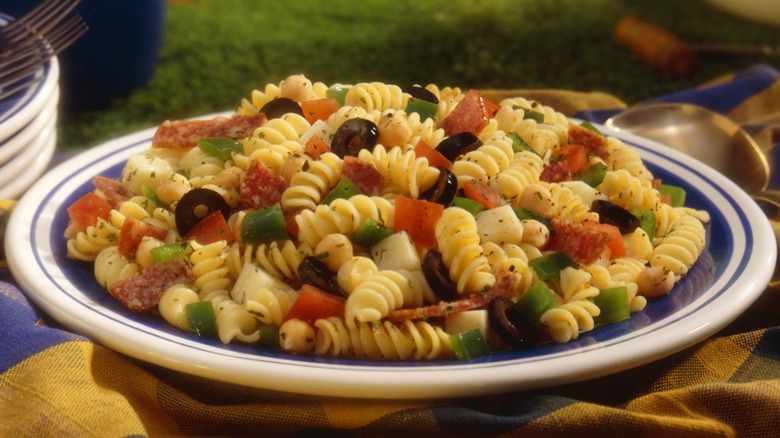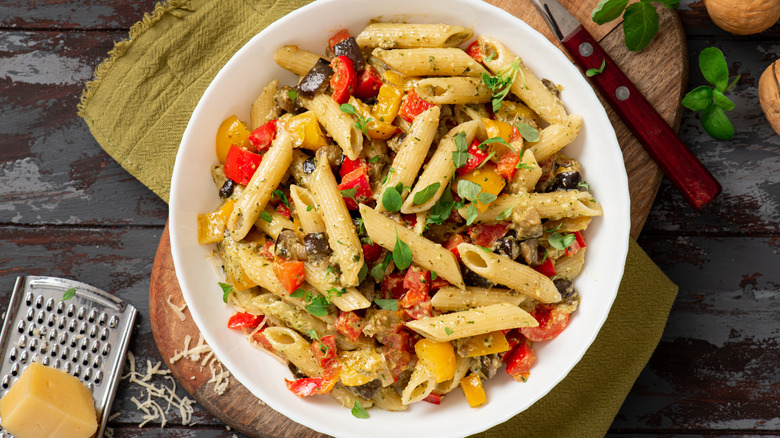The Crucial Reason You Shouldn't Add Too Much Vinegar To Pasta Salad
Pasta salad, especially in the warmer months, makes for a tasty and refreshing side dish. These noodles are always a crowd-pleaser, and there are so many different variations of this salad to choose from. Some may have a mayonnaise base while others rely on a vinaigrette to provide a powerful punch of flavor. For these latter recipes, you want to watch out for a well-known culinary pitfall.
Something strange happens when there's too much vinegar in your pasta salad dressing. The pasta and the vinegar don't play well together, giving the overall salad an oddly metallic aftertaste. No one wants to take a bite and then be left with an unpleasant tang in their mouth. That's why you'll often see pasta salad recipes that use way more oil than vinegar to offset this problem. To prevent the vinegar from clashing with the pasta, there's usually a 2-to-1 ratio of oil to vinegar in the dressing. For example, blend a ½ cup of olive oil with a ¼ cup of vinegar.
Other ways to amp up pasta salad
Without the splashy acidity of vinegar, how do you enhance the flavor of your pasta salad? Some say using lemon juice in place of vinegar in the dressing is one way to go. Using mustard in your dressing also works wonders in giving the salad more oomph. A spoonful of pesto – from your traditional basil-based pesto Genovese to sun-dried-tomato-based pesto rosso full – is another popular addition to pasta salad.
Beyond the dressing itself, there are a number of add-ins for pasta salad that provide a big flavor boost. Fresh herbs can help dial up the flavor of your salad while capers and olives can provide a salty and briny note to any dish. Toss in a bit of diced chiles to give the salad some heat. Roasted vegetables can also add a smoky quality.
Another important part of making a tasty pasta salad is timing. Please make sure to make the salad when the pasta is still warm, allowing the pasta to absorb all the flavors of the dressing.

